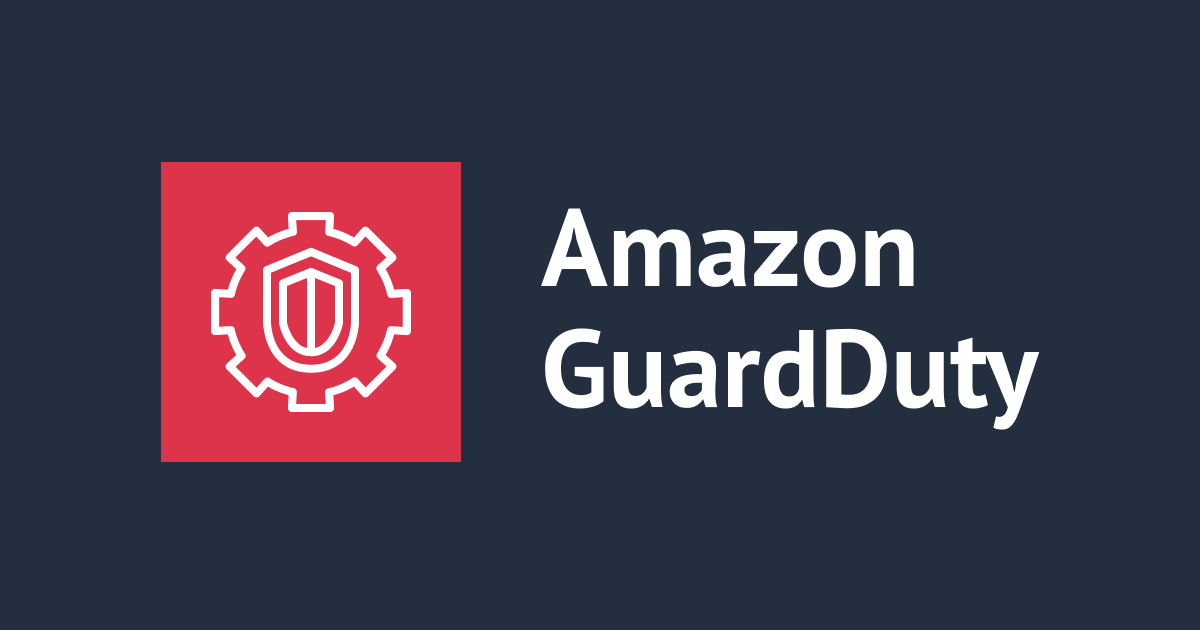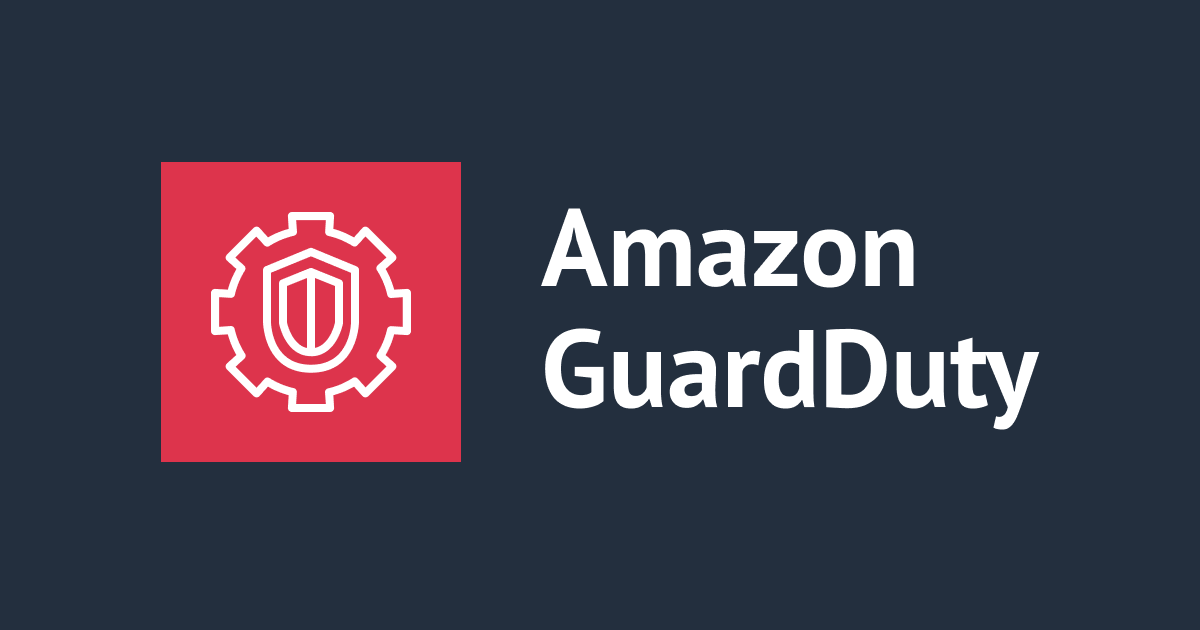
GuardDuty EKS Runtime Monitoring 用エージェントで複数パラメータを設定可能になったので試してみた
GuardDuty EKS Runtime Monitoring の v1.5.0 からエージェントに対して複数パラメータを設定可能になりました。
今回設定可能になったパラメータは下記になります。
- CPU settings(Requests, Limits)
- Memory settings(Request, Limits)
- PriorityClass settings
- dnsPolicy settings
設定可能になったパラメータ
まず、設定可能になったパラメータを確認してみます。
CPU settings, Memory settings
Requests はコンテナが利用するリソースの最低保証量になり、Limits はリソースの最大量になります。
CPU のデフォルトは Requests が 200mCPU、Limits が 1CPU です。
メモリのデフォルトは Requests が 256MiB、Limits が 1GiB です。
Configure GuardDuty security agent (add-on) parameters for Amazon EKS | Amazon GuardDuty
特に設定せずにインストールしてみた所、ドキュメント記載通りの値になっていました。
Limits:
cpu: 1
memory: 1Gi
Requests:
cpu: 200m
memory: 256Mi
Pod を 2 台起動しつつ、リソース使用量を見てみましたが、このくらいであれば全然リソースを使っていないですね。
$ kubectl top pod -n amazon-guardduty NAME CPU(cores) MEMORY(bytes) aws-guardduty-agent-4tcc8 70m 55Mi
ただ、セキュリティを担保する役割を持つ以上、積極的に触る内容では無くこの分も踏まえてリソースを確保するという考え方が良いと思います。
そもそも、CPU、メモリ共に Requests を今の値より下げることはできず、そのような使い方は想定されていません。
継続的に Requests を超えてリソースを利用しているのであれば、安定動作のために Requests を増やすような使い方で利用するのが良いと思います。
PriorityClass settings
Podがスケジューリングされる優先度を定義可能です。
元々 Kubernetes にデフォルトで存在する PriorityClass である system-cluster-critical、 system-node-critical に加えて、エージェント追加時に登録される aws-guardduty-agent.priorityclass-high、 aws-guardduty-agent.priorityclass から選択可能です。
$ kubectl get priorityclass NAME VALUE GLOBAL-DEFAULT AGE aws-guardduty-agent.priorityclass 1000000 false 3h40m aws-guardduty-agent.priorityclass-high 100000000 false 3h39m system-cluster-critical 2000000000 false 3h55m system-node-critical 2000001000 false 3h55m
設定を行わない場合のデフォルト値は aws-guardduty-agent.priorityclass です。
Priority: 1000000 Priority Class Name: aws-guardduty-agent.priorityclass
デフォルトの aws-guardduty-agent.priorityclass が一番 priority 値が低いため、こちらの設定を行うことでエージェントの優先度を上げることが可能です。
また、Kubernetes にはプリエンプトと呼ばれる機能があり、リソースに空きが無い場合に他の優先度の低い Pod を終了してスケジュール可能にすることができます。
デフォルトの設定では preemptionPolicy が Never になっているため、スケジューリング時は他の優先度の低い Pod より優先されますが、他の Pod をプリエンプトはしない設定になります。
余裕を持ったリソース確保が望ましいとは思いますが、コンピューティングリソースが潤沢で無い場合は、priority 値を適切に設計した上でエージェントの PriorityClass を変更しても良いかもしれません。
dnsPolicy settings
Pod がどのように名前解決を行うかを設定可能です。
定義可能な値が決まっており、以下の3つから選択できます。
"ClusterFirst": "www.kubernetes.io"のようなクラスタードメインのサフィックスにマッチしないようなDNSクエリーは、Nodeから継承された上流のネームサーバーにフォワーディングされます。
"Default": そのPodはPodが稼働しているNodeから名前解決の設定を継承します。
"ClusterFirstWithHostNet": hostNetworkによって稼働しているPodに対しては、ユーザーは明示的にDNSポリシーを"ClusterFirstWithHostNet"とセットするべきです。
PodのDNSポリシー
何も設定しなかった際は Default ではなく、 ClusterFirst になります。
クラスタ内の Service 等に対する DNS クエリは クラスター内の DNS サーバ (coredns 等) に問い合わせつつ、それ以外は Node から継承された上流のネームサーバーにフォワーディングする設定です。
やってみた
アドオン設定の JSON スキーマは下記のようになります。
{
"$ref": "#/definitions/GuardDutyAgent",
"$schema": "http://json-schema.org/draft-06/schema#",
"definitions": {
"GuardDutyAgent": {
"additionalProperties": false,
"properties": {
"dnsPolicy": {
"enum": [
"ClusterFirstWithHostNet",
"ClusterFirst",
"Default"
],
"type": "string"
},
"priorityClassName": {
"enum": [
"aws-guardduty-agent.priorityclass",
"aws-guardduty-agent.priorityclass-high",
"system-cluster-critical",
"system-node-critical"
],
"type": "string"
},
"resources": {
"$ref": "#/definitions/Resources"
}
},
"title": "GuardDutyAgent",
"type": "object"
},
"Limits": {
"additionalProperties": false,
"properties": {
"cpu": {
"pattern": "^([2-9]\\d{2}|[1-9]\\d{3}|10000)m$",
"type": "string"
},
"memory": {
"pattern": "^(256|[3-9]\\d{2}|[1-9]\\d{3}|1\\d{4}|20000)Mi$",
"type": "string"
}
},
"title": "Limits",
"type": "object"
},
"Requests": {
"additionalProperties": false,
"properties": {
"cpu": {
"pattern": "^([2-9]\\d{2}|[1-9]\\d{3}|10000)m$",
"type": "string"
},
"memory": {
"pattern": "^(256|[3-9]\\d{2}|[1-9]\\d{3}|1\\d{4}|20000)Mi$",
"type": "string"
}
},
"title": "Requests",
"type": "object"
},
"Resources": {
"additionalProperties": false,
"properties": {
"limits": {
"$ref": "#/definitions/Limits"
},
"requests": {
"$ref": "#/definitions/Requests"
}
},
"title": "Resources",
"type": "object"
}
},
"description": "Advanced configuration parameters of AWS GuardDuty Agent (EKS Runtime Monitoring Addon)"
}
下記 JSON ファイルを用意して、 CLI ベースで更新してみました。
{
"priorityClassName": "aws-guardduty-agent.priorityclass-high"
}
aws eks update-addon --cluster-name test-cluster --addon-name aws-guardduty-agent --addon-version v1.5.0-eksbuild.1 --configuration-values 'file://aws-guardduty-agent-setting.json' --resolve-conflicts OVERWRITE
更新完了後、無事設定値が反映されていました。
$ kubectl describe pod aws-guardduty-agent-hng6r -n amazon-guardduty | grep "Priority Class Name" Priority Class Name: aws-guardduty-agent.priorityclass-high
新しい API が利用可能になったのではなく、設定可能な項目値が増えるといった形なので、現時点で Terraform 経由でも設定可能です。
※ 下記は EKS Module を利用した場合
module "eks" {
source = "terraform-aws-modules/eks/aws"
version = "~> 20.8.3"
cluster_name = "test-cluster"
cluster_version = "1.29"
cluster_endpoint_public_access = true
vpc_id = module.vpc.vpc_id
subnet_ids = concat(module.vpc.public_subnets, module.vpc.private_subnets)
cluster_addons = {
aws-guardduty-agent = {
most_recent = true
configuration_values = jsonencode({
priorityClassName = "aws-guardduty-agent.priorityclass"
dnsPolicy = "ClusterFirst"
resources = {
limits = {
cpu = "500m"
memory = "500Mi"
}
requests = {
cpu = "200m"
memory = "256Mi"
}
}
})
}
}
eks_managed_node_groups = {
initial = {
node_group_name = "test-ng"
instance_types = ["m3.medium"]
min_size = 1
max_size = 1
desired_size = 1
subnet_ids = module.vpc.private_subnets
}
}
}
まとめ
GuardDuty EKS Runtime Monitoring エージェントに対して複数パラメータを設定可能になりました。
より安定して動作させられるよう、必要に応じて調整してみて下さい!



![[アップデート] GuardDuty 拡張脅威検出がEKSに対応しました](https://images.ctfassets.net/ct0aopd36mqt/6vZd9zWZvlqOEDztYoZCro/7349aaad8d597f1c84ffd519d0968d43/eyecatch_awsreinforce2025_1200x630-crunch.png)

![[プレビュー]AWS Security Hubが機能分離され統合セキュリティソリューションに生まれ変わりました #AWSreInforce](https://devio2024-media.developers.io/image/upload/v1750182741/user-gen-eyecatch/qkcx7ur7lucwpwcit7rv.jpg)



